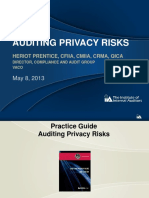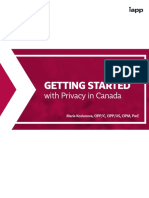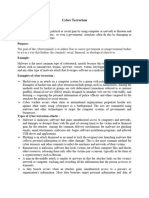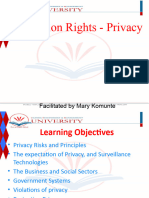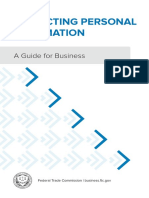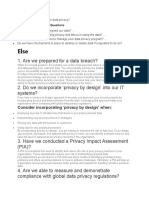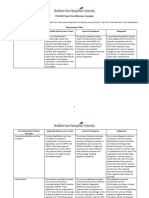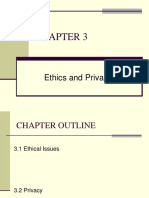0% found this document useful (0 votes)
61 views27 pagesModule 3 Lecture 8 Fall 2023
The document discusses privacy frameworks and managing privacy risks. It outlines key components of privacy programs including governance, controls, and responding to breaches. Frameworks like NIST and ISO can help standardize an organization's privacy practices.
Uploaded by
samsweet96Copyright
© © All Rights Reserved
We take content rights seriously. If you suspect this is your content, claim it here.
Available Formats
Download as PDF, TXT or read online on Scribd
0% found this document useful (0 votes)
61 views27 pagesModule 3 Lecture 8 Fall 2023
The document discusses privacy frameworks and managing privacy risks. It outlines key components of privacy programs including governance, controls, and responding to breaches. Frameworks like NIST and ISO can help standardize an organization's privacy practices.
Uploaded by
samsweet96Copyright
© © All Rights Reserved
We take content rights seriously. If you suspect this is your content, claim it here.
Available Formats
Download as PDF, TXT or read online on Scribd
/ 27


